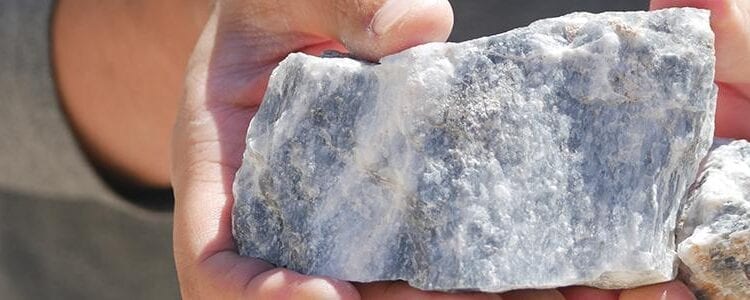Prospect Resources Ltd (ASX:PSC, FRA:5E8) has discovered significant Caesium concentrations in soil from a number of satellite bodies surrounding the Arcadia Lithium Project in Zimbabwe.
The discovery was notably discovered in the Shabaash satellite where Prospect’s ground holdings consists of a block of three mining claims, covering some 50 hectares of open bushland. The Shabaash site is located 3km west of the planned Arcadia Pit.
Global supply of caesium, which is primarily used of caesium in Caesium Formate brine used in high temperature/high pressure oil and gas drilling, is very constrained.
Managing Director, Sam Hosack, said the identified caesium occurs within pollucite, a high value rare caesium mineral that forms in extremely differentiated Lithium-Caesium-Tantalum (LCT) pegmatite systems.
While there is still a good deal of follow up exploration work to be done, Prospect believes there is increasing evidence for large scale mineral zonation around the periphery of the 4.5km long Arcadia petalite-spodumene mineralisation.
“The implications for the proceptivity of the greater Arcadia area, for hidden deposits (Cs/Ta/Sn) are immense,” Mr Hosack said.
The Caesium fins were discovered as part of its satellite exploration and ground sterilisation programme, 14,000 soil samples were collected from the area surrounding the drilled resource in 2017 – 2018. Soil samples were collected every 20m on 100m spaced lines, surveyed north-south, but due to time constraints, assayed only for Lithium, by atomic absorption at Zimlabs, Harare.
A number of lithium anomalies were defined, which were subsequently drilled in 2017 – 2018. All of these were subsequently drilled and proved to be mineralised pegmatites, albeit in some case too thin and low grade to be economic. The anomaly at Bermersyde, in contrast, was successfully drilled and, is now part of the reserve, and is the epicentre of the planned Northeast satellite pit.
In December 2019, a small number (61) of stored pulps were selected for re-assay for caesium. These were selected from samples which had previously returned Lithium anomalies.
From a statistical analysis of the results, 13 of them returned caesium results > 100ppm, and four anomalous returned > 400pm. Of these results, 1 sample was located within the Company’s Shabaash Claim holding.
A trenching programme into the pegmatite zone is planned by excavating at least four trenches, 30m long and 2-3m deep, across the strike of the anomaly.












